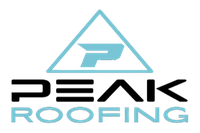When powerful storms sweep through West Texas, roof damage can appear overnight. Homeowners feel pressure to act fast, which makes it easy to choose the wrong company. Selecting a qualified roofing contractor protects your home, your budget, and your peace of mind. The right choice starts with careful verification rather than urgency.
Start With Local Presence and Tenure
Storm-chasing outfits often arrive right after severe weather. They promise quick turnarounds and low prices, then disappear if problems arise. Prioritize companies with a verifiable local address, long-standing service in your area, and a documented portfolio. Local tenure signals accountability, established processes, and the capacity to honor warranties if issues occur months later.
Verify Licensing, Insurance, and Safety Practices
Ask for proof of state and local licensing, active liability coverage, and workers’ compensation. These documents protect you from financial responsibility if accidents happen on-site. Confirm policy details directly with the insurer. A reputable contractor will also outline safety plans, jobsite supervision, and how they protect landscaping, driveways, and attic spaces during repairs.
Ask for References and Recent Projects
Request at least three recent references that match your roof type and scope. Speak with those homeowners about punctuality, cleanliness, and final results. Ask whether the contractor communicated changes before proceeding with extra work. A trustworthy professional welcomes these questions and provides photos or addresses of completed projects when allowed.
Review Public Reputation and Accreditation
A contractor that values transparency maintains ratings on recognized platforms. Check standing with the Better Business Bureau and review trends across multiple sites. Occasional complaints can occur, yet repeated notes about leaks, missed deadlines, or unreturned calls are warning signs. Look for consistent responses from the company that show ownership and resolution. Exploring customer testimonials will give you an overview of what to expect.
Compare Written Estimates Line by Line
Obtain detailed written estimates from at least two providers. Review materials, ventilation upgrades, underlayment type, flashing details, and disposal fees. Confirm who handles permits and inspections. An unusually low price can signal shortcuts or unlicensed labor. Clear itemization protects you from change orders that appear after work begins.
Understand Warranties and Post-Project Support
Ask about manufacturer and workmanship warranties, including what triggers coverage and how claims are handled. Clarify inspection schedules after completion, emergency response times, and maintenance programs. A reliable team explains how to document issues, who to contact, and typical turnaround times for service calls during busy seasons.
Recognize Red Flags Before You Sign
Be cautious if a salesperson appears immediately after a storm and insists your roof is unsafe without evidence. Warning signs include no local address, refusal to provide insurance certificates, pressure for full payment upfront, and vague timelines. Decline offers to “handle” your claim or cover your deductible. Those tactics can violate policy terms and lead to disputes.
Your Action Plan After Storm Damage
- Document the damage with clear photos before cleanup begins.
- Contact your insurer promptly and note claim numbers and deadlines.
- Schedule inspections with two reputable contractors for comparison.
- Verify licenses, active insurance, and references for similar projects.
- Review line items, warranties, and start dates in writing before payment.
Selecting the Right Service for Your Roof
If inspection confirms repairs or replacement, choose a page that matches your needs and review options with the project manager. For commercial properties, compare scope and materials on the company’s dedicated service page to understand system choices, timelines, and safety planning. See Peak’s overview here: commercial roofing.
Learn From Post-Storm Case Studies
Trusted providers often publish maintenance tips and inspection guidance that help homeowners avoid repeat damage. Reviewing those resources clarifies what to expect during tear-off, how ventilation improvements protect shingles, and why proper flashing matters. For ongoing insight, visit Peak’s category hub: roof inspection and storm repair.
Storm recovery is stressful, yet careful selection prevents bigger losses later. A reputable roofing contractor offers proven experience, transparent documentation, and lasting workmanship. Verify credentials, compare written estimates, and confirm warranty terms before you sign. Taking an extra hour to validate the team today can save thousands over the life of your roof. Contact Peak Roofing and Exteriors today, and allow us to show you what experience can do.
This content is for educational purposes only and does not constitute legal advice.

